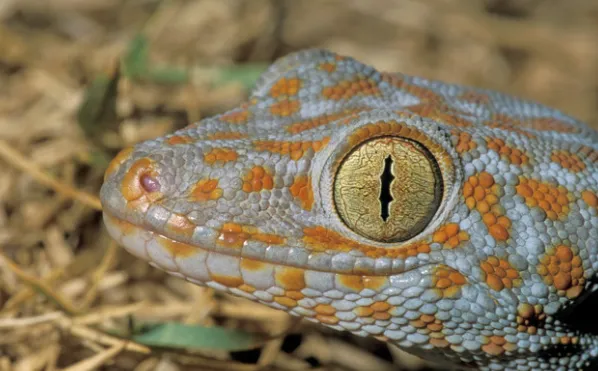
Table of Contents
Scientific Classification
- Kingdom: Animalia
- Phylum: Chordata
- Class: Reptilia
- Order: Squamata
- Suborder: Lacertilia (or Sauria)
- Family: Gekkonidae
- Genus: Gekko
- Species: G. gecko
Quick Overview
The Tokay Gecko (Gekko gecko) is famed for its vibrant colors and unique vocalizations. Hailing from parts of Asia and some Pacific Islands, this nocturnal gecko is revered in some cultures and feared in others due to its aggressive nature.
Fast Facts
- Scientific Name: “Gekko gecko”
- Lifespan: 7-10 years in the wild; up to 15 years in captivity
- Average Size: 10-15 inches
- Diet: Carnivorous
- Habitat: Tropical rainforests, cliffs, and urban areas
Did you know?
The distinctive “to-kay” call of the Tokay Gecko is not only the origin of its name but also a sound that’s often heard in its native habitat during mating season.
Appearance
The Tokay boasts a bright blue or grayish body with vibrant orange or red spots, making it easily distinguishable. Its muscular tail and robust body further enhance its striking visual appeal.
Size and Weight
Males, generally the larger sex, can grow up to 15 inches, while females average between 8-12 inches. Weight can range between 150 to 300 grams.
Temperament and Behavior
Known for its assertive and often aggressive nature, the Tokay Gecko is nocturnal, with vocalizations that are especially prominent during the breeding season.
Fun Fact:
The call of the Tokay Gecko can be heard over considerable distances and is often described as echoing the phrase “TO-kay, TO-kay!”
Habitat and Distribution
Native to Southeast Asia, including regions of Thailand, the Philippines, Malaysia, and Indonesia, they’re also found in the Northeastern parts of India and some Pacific Islands.
Care Guide
For those considering a Tokay as a pet:
- A spacious terrarium with plenty of vertical structures for climbing.
- Humidity levels between 60-80% to replicate their tropical habitat.
- Night temperatures of around 70°F with daytime highs reaching 90°F.
- Plenty of hiding spots to mimic their natural environment.
- A careful approach, as they’re more aggressive than many other gecko species.
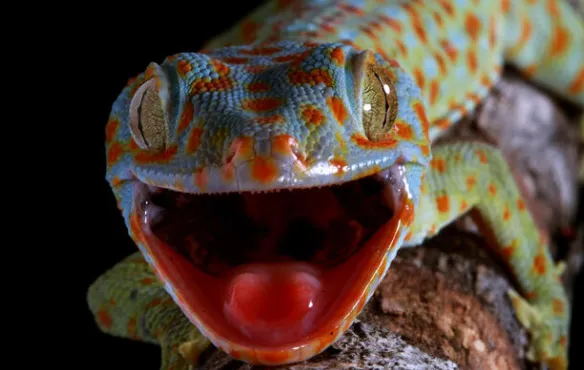
Diet and Nutrition
Tokay Geckos are primarily insectivores but have been known to consume smaller lizards and even small mammals or birds. In captivity, a varied diet of insects, supplemented with essential vitamins and minerals, is ideal.
Fun Fact:
Tokay Geckos have been known to consume pests, making them a welcome presence in certain human dwellings in their native range.
Health and Wellness
Owners should be mindful of issues like metabolic bone disease, respiratory infections, and parasitic invasions. Their aggressive nature also makes them prone to injuries if multiple Tokays are kept together.
Breeding
After mating, female Tokays lay clutches of one to two hard-shelled eggs, often attaching them to a firm surface. Incubation is temperature-dependent and takes between 2-3 months.
Conservation Status
While they are widespread and adaptable, habitat loss and capture for the pet trade or traditional medicine pose threats in certain regions.
Fun Fact:
The Tokay Gecko’s bite is notoriously strong. When they latch on, it can be challenging to get them to release their grip!
Photo Gallery
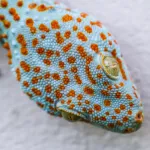
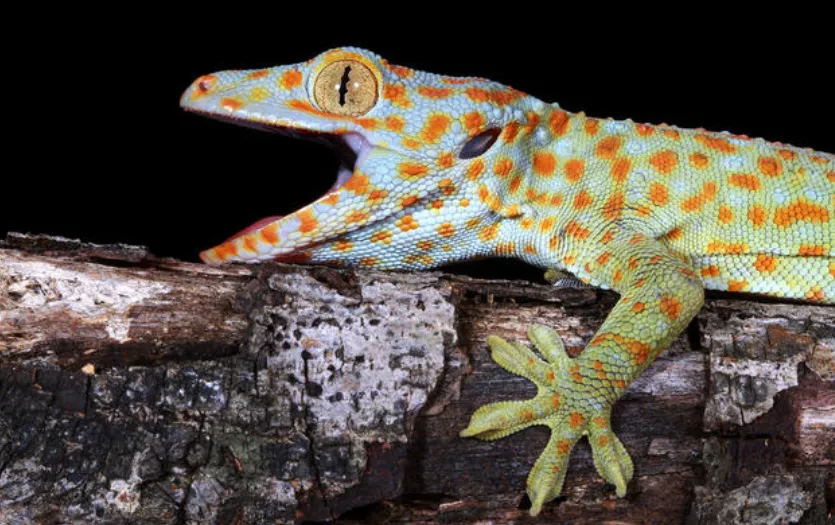
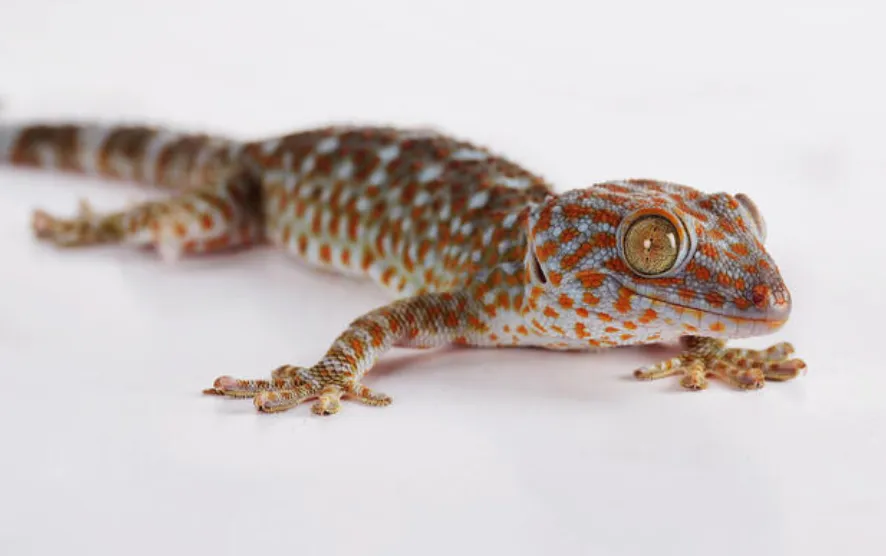
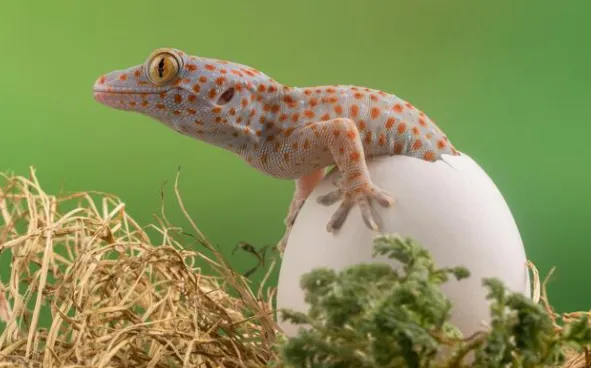
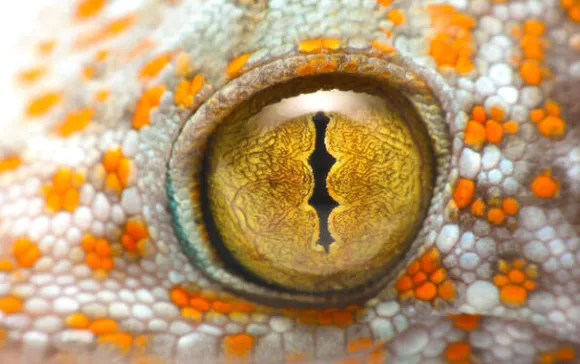
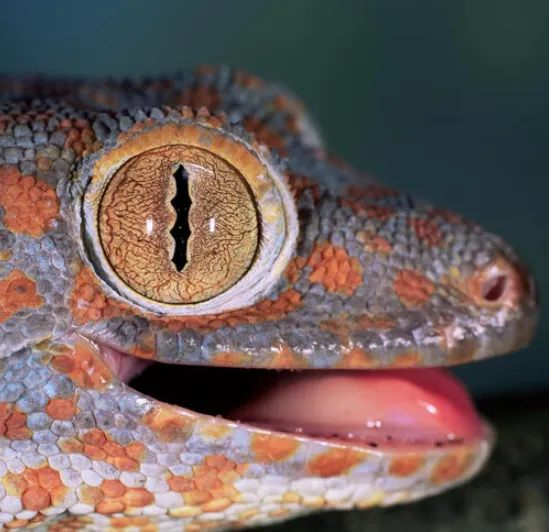
Check out the video below and find out Tokay Gecko’s distinct call:
Related Profiles
Share This Profile:
3 Amazing Facts About Tokay Gecko
- Vibrant Predator: The bright coloration of the Tokay is not just for show. It’s a visual indication of its assertive nature, signaling to potential predators that it’s not easy prey.
- Natural Climber: Thanks to specialized toe pads, Tokay Geckos can effortlessly navigate vertical surfaces and even ceilings, making them agile predators in their native tropical habitats.
- Cultural Significance: In some cultures, the Tokay Gecko is believed to have medicinal properties, and its distinct call is considered an omen or sign, depending on local folklore.
- Enchi Ball Python: A Unique and Stunning Morph of Python regius - March 27, 2025
- Emerald Tree Monitor: The Enigmatic Green Guardian of the Rainforest - March 26, 2025
- The Egyptian Cobra (Naja haje): A Fascinating Serpent - March 25, 2025
